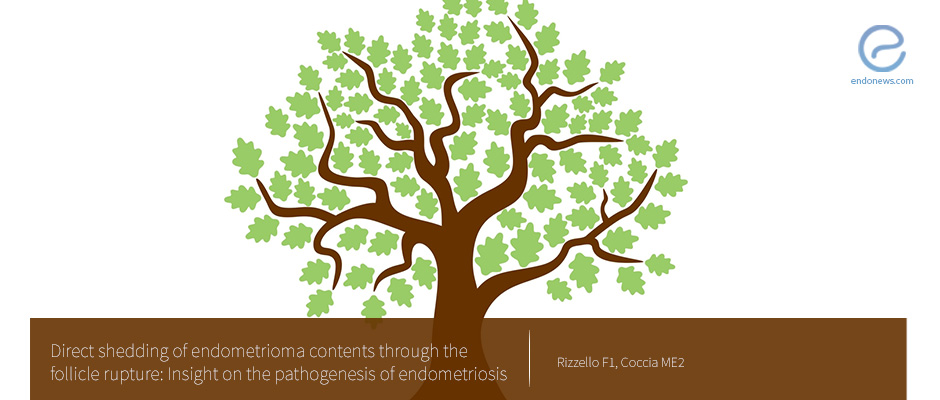Direct shedding of endometrioma contents visualized by ultrasonography
Apr 24, 2018
Insight on the pathogenesis of endometriosis using Ultrasonography
Key Points
Highlights:
- This case report presents ultrasound images detailing endometrioma content shedding into an adjacent ovarian follicle.
Key Results:
- Endometromas have been known to have the ability to spread and thus invade adjacent structures within the pelvic cavity.
- This case report presents ultrasound images of an endometrioma nodule with an 'oak tree' like stalk that is seen to invaginate an adjacent dominant follicle.
- Doppler images demonstrate that endometriomas can induce neovasculature, consistent with findings from other studies.
What’s done here?
- Authors of this case report present ultrasound images that show an ovarian endometrioma nodule invaginating into a dominant follicle.
Limitations:
- Case reports usually present findings from one patient and thus cannot evaluate the applicability and prevlance of said findings to a larger population or group of patients.
Lay Summary
Endometriosis is one of the leading causes of chronic pelvic pain in women during their childbearing years. Researchers from Italy have recently published a case report in the European Journal of Obstetrics & Gynecology and Reproductive Biology observing the direct shedding of endometriotic cyst contents to a neighboring ovarian follicle.
Case reports detail the clinical management of a patient in order to highlight a certain clinical phenomenon or to raise questions for further study. A 39-year old gravida 0, para 0 (never pregnant) woman with ovarian endometrioma and right pelvic pain was assessed intially because she experienced prolonged and heavy menstrual bleeding at regular 28 day intervals. An ultrasound was performed and it revealed a round-shaped and dark mass within one of her ovaries. Doppler, an ultrasound-based technique used to assess forward (arterial) and backward (venous) blood flow through blood vessels, revealed that new vasculature was present within this endometrioma. Her clinicians then perscribed her Diengest, a oral progestin-only hormone used to prevent further growth of the endometrioma. While taking this medication once daily for three months, the patient reported no recurrence of her past symptoms and an ultrasound done after the three month treatment revealed a reduction in the size of the endometrioma.
Afterwards, the medication was stopped because the patient wanted to get pregnant. After failing to become pregnant, a repeat ultrasound was performed and this time it revealed a nodule that began from the endometrioma into a neighboring follicle, described in this study as resembling an 'oak tree'. Authors believe this is a case of an observed endometrioma shedding event. Thus, women who stop medical treatment for reasons such as wanting to become pregnant should plan with their doctor the optimal timeframe for conception and to prevent further progression of their disease.
Research Source: https://www.ncbi.nlm.nih.gov/pubmed/?term=29482854
endometriosis ultrasound oak tree medical imaging shedding rupture pathogenesis insight

